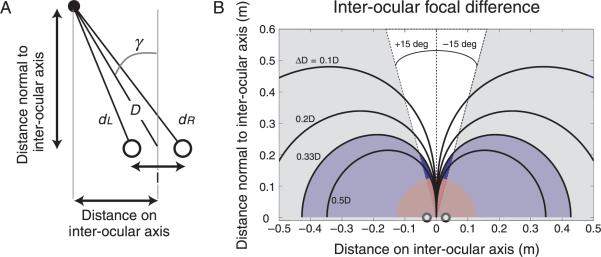Figure 2.
Inter-ocular differences in focal distance. A) Object viewed binocularly. An object is presented at distance D and azimuth γ from the eyes, which are separated by I. The distances from the object to the two eyes are dL and dR. B) Inter-ocular focal difference as a function of object position. The abscissa is object position parallel to the inter-ocular axis and the ordinate is object position perpendicular to that axis. Inter-ocular focal difference is the difference between the reciprocals of the distances to the two eyes in meters (Equation 7). The black contours depict the locations in space where the inter-ocular focal difference is constant. The blue region indicates the locations where the focal difference is greater than the eyes' depth of focus and therefore the focal difference should be perceptible. The gray region shows the range of positions that an observer would typically make a head movement to fixate. The red zone marks the region where objects are closer than 8D, and an observer would typically step back to fixate. The dark blue zone is the region where fixation is possible and there is a perceptible inter-ocular focal difference.

